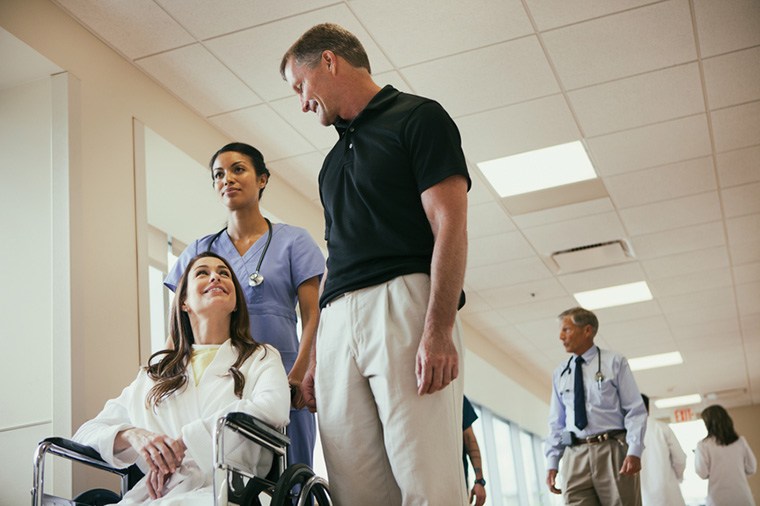The Link Between Cancer and Endometriosis You Need to Know About
That delay is obviously unacceptable because no woman should ever have to put up with pain for so long, but also because the condition can have serious implications for a woman's fertility and—as research increasingly shows—her risk of developing ovarian and breast cancer.
It takes an average of 10 years for women in the United States to be properly diagnosed with endometriosis.
With endo, tissue from the lining of the uterus grows outside the uterine walls, causing symptoms like painful periods, painful sex, and excessive bleeding (issues women often put up with because they think they're not bad enough to warrant medical attention, or because their doctors are totally in the dark when they do seek help). Some women also develop large ovarian cysts, and because endometriosis creates an inflammatory environment, the cells in those cysts can transform into cancerous tumor cells, explains Ie-Ming Shih, MD, PhD, director of the Gynecologic Pathology Laboratory at Johns Hopkins University.
Knowing where you have endo—is it on your ovaries or on surrounding pelvic organs?—is crucial to understanding whether you have an increased risk of getting ovarian cancer, Dr. Shih says, but locating your endo is trickier than you might think. The only official way to diagnose it is via laparoscopy. After that, follow-up imaging can determine, first, if you have cysts on your ovaries and then whether those cysts look problematic, says Dr. Shih.
As far as breast cancer and endometriosis, studies point to a link—but at this point it's just a link. "We don't know the cause and effect relationship of breast cancer and endometriosis," explains Dr. Shih. "But they do have the same risk factor, meaning more estrogen in a woman’s body can increase the risk of breast cancer and endometriosis."

This link may seem (and indeed, be) a dark cloud over an already scary diagnosis. But experts say it's no reason to freak out. "The increased risk for ovarian cancer is relatively low—1 to 2 percent higher—but it is greater than [the risk for] the general population without endometriosis," says Dr. Shih.
Still, there's plenty that women with endometriosis can do to reduce their risk of cancer. First, Dr. Shih says it's helpful to lower inflammation in your body as much as possible. Your diet can help with this (say yes to whole foods and no to anything processed), and doctors might prescribe NSAIDs (non steroidal anti-inflammatory drugs), progesterone, or certain birth control pills to reduce inflammation and ease general symptoms as well.
This link may seem (and indeed, be) a dark cloud over an already scary diagnosis. But experts say it's no reason to freak out.
Dr. Shih says it's also important to keep your estrogen levels in check by avoiding any estrogen-boosting treatments or medication, like estrogen replacement therapy or hormonal birth control that has more estrogen than progesterone. Maintaining a healthy weight is also key (research shows that obesity creates a higher estrogen level in tissues), as is not smoking and avoiding foods that contain estrogen or estrogen-like compounds, says Dr. Shih. That means being careful with many soy products and dairy.

{{post.sponsorText}}
Most of all, it's important for women to know that they don't have to put up with painful endo symptoms. And the first step to finding relief is starting the endo convo—with your health care providers and your friends. Yep, it's a totally brunch-friendly topic: After all, periods and eggs go great together.
See how Julianne Hough copes with her endometriosis diagnosis from a positive place, and learn how to lower inflammation inside-out with this super easy tip.
Loading More Posts...